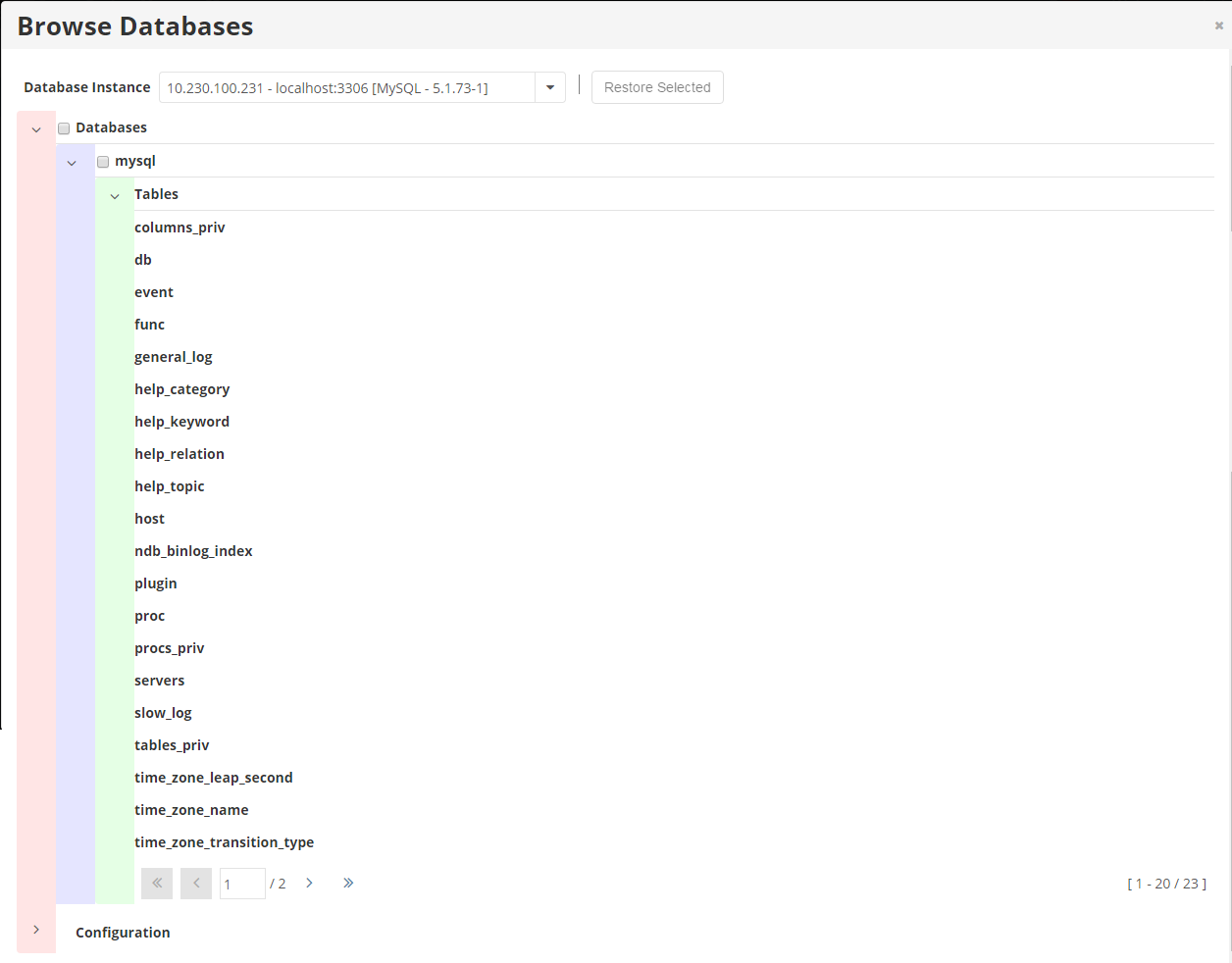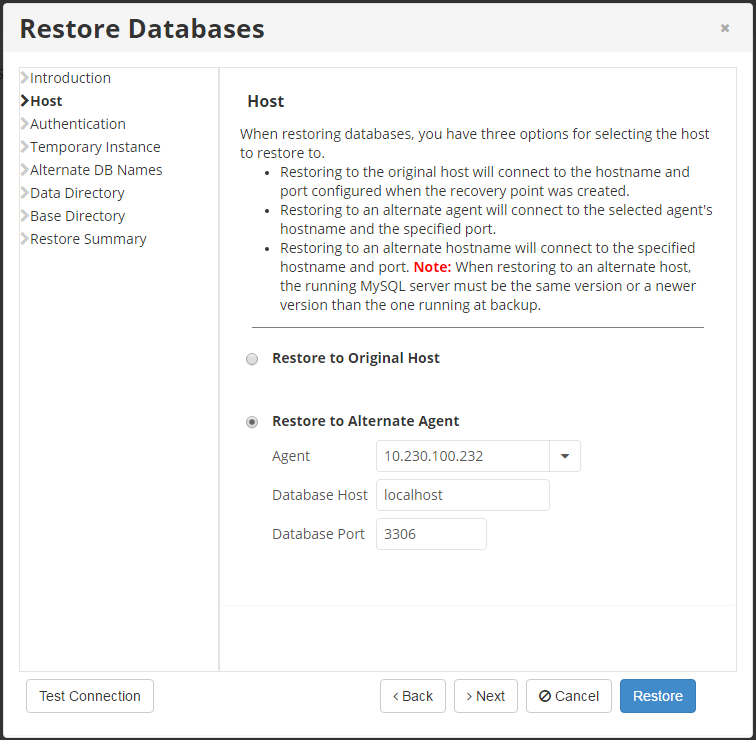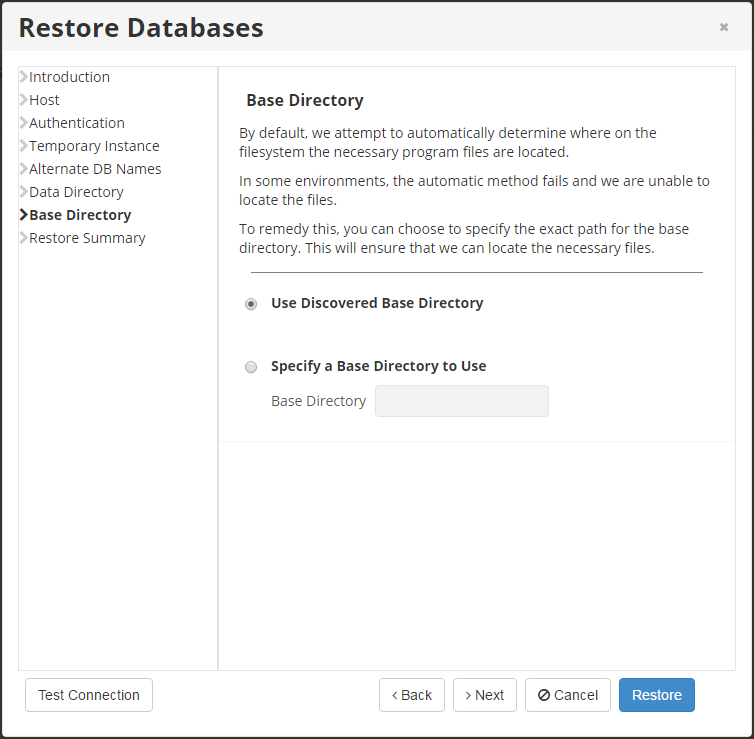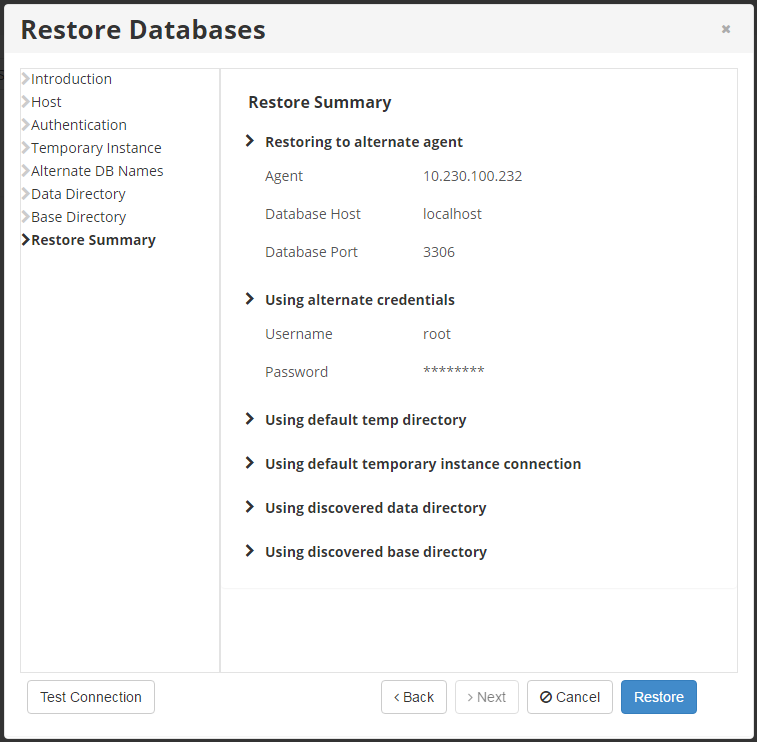You can restore a MySQL database to an alternate server in your Server Backup Manager by following the instructions below.
| Note MySQL database tables can be restored simultaneously; this is implemented by using multiple threads. |
1. Follow the instructions listed on Browse MySQL instances to select a Recovery Point containing the necessary database replication and open the Browse Databases window.
2. When the Browse Databases window opens, select a database instance in the Database Instance field. You can then browse the database instance by clicking the corresponding > icons. 
3. Select the check box for the database you want to restore and click the Restore Selected button. 
The Restore Databases window displays, where you can define the options for the restore.
4. On the Introduction screen, review the introductory information and click Next to proceed.

5. On the Host screen, select the Restore to Alternate Agent option.
Select the agent you want to restore in the Agent field, enter localhost in the Database Host field, and enter 3306 in the Database Port field.

Click Next to proceed to the following step.
6. On the Authentication screen, you have two options to specify to connect to the database. Select the Specify Alternate Authentication Credentials option. This allows you to set a username and password different from the default ones. The user must have full administrator-level access to the database instance you are going to restore.

Enter the required credentials in the Username and Password fields and click Next to proceed to the following step.
7. The next screen is Temporary Instance. When restoring databases, the system needs to create a temporary directory on the target Server for the restore. There are two options for this.
- Use Default Temp Directory - Creates a directory in an OS-specific default location (C:\Temp for Windows, /tmp for Linux).
- Specify an Alternate Temp Directory - Allows you to control exactly where the temp directory is created on the Server.

The other fields (Connection Information and Virtuozzo Container ID) can be left unchanged.
Select an option and click Next to proceed to the following step.
8. The following screen is the Data Directory screen. By default, the database configuration retrieved during discovery is used. In some environments, this path does not point to the actual location on the filesystem for the data. To remedy this, you can choose to specify the exact path for the data directory. This will ensure that the system can locate the data files for the database during the restore.

Select an option and click Next to proceed.
9. On the Base Directory screen, specify the exact path for the base directory. By default, the system automatically determines where on the filesystem the necessary program files are located. In some environments, the automatic method fails. 
Select an option and click Next to proceed.
10. On the Summary screen, the settings you have selected are listed and can be reviewed.

11. Once you have verified that the specified settings are correct, the Restore button. The restore process will start immediately.
The Details for Database Restore window displays. It indicates that the restore process is launched. You can watch the progress in real time. 
12. When the database restore is completed, a success message displays. You can also click through the tabs on this window to review additional database restore details. 
